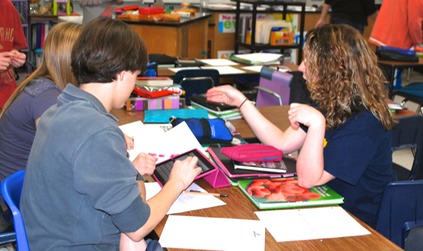During the explanation phase students begin to explain the concepts they have been exploring. This phase provides opportunities for teachers to introduce formal terms, definitions, and explanations for concepts, processes, skills, or behaviors.
Explanation is the part of the plan set aside for providing content so that students can develop a mastery of the objectives. It should include: explicit learning strategies, multiple representations of information, direct instruction to address new vocabulary, frequent opportunities for response and practice, content summary and variety of student centered learning activities.
Explanation includes more than just a teacher's lecture. It includes conversation, discourse, argumentation, learning from text, taking notes, vocabulary study, continued exploration and skill practice and feedback. The explanation phase is often longer in duration and make take place over several learning sessions.

In a UDL classroom, teachers provide multiple options and means for explaining the content. Because all students learn differently, providing information via a variety of modalities ensures that every student get access to the information they need to learn. There is not one means of representation that is optimal for all learners; providing options for representation can improve the learning opportunities in the classroom. (National Center on Universal Design for Learning, 2012).
The explanation section of an E3T lesson includes:
Explanation Tools: Employing Students to Take Charge of the Learning
Organizing Lesson Resources
Tutorial Designers
Class Scribe
Researcher
Google images and Camera Roll